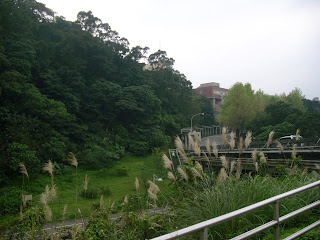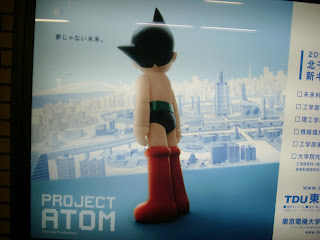On Thursday we went to Maokong [貓空], a tea-growing area far away from downtown Taipei but still within city limits. It's a really pretty area.


While there we had tea, because it is a great place to sip tea, chat, and enjoy the scenery. The weather's also much milder than it is in Taipei, as it is at a higher altitude.

It was a really enjoyable experience, and I hope to go back and explore some more once the weather gets hotter and sunnier. While we went during the day, most of my Taiwanese friends said I should go at night instead. Apparently the night view of the city is stunning. So I hope to get a chance to do that.
Yesterday we had a "scavenger hunt". CIEE divided us into groups and we were given packets that had names of restaurants that we were to go. We went to all of them, bought food, and took pictures (as we have to make a presentation for Tuesday). Unfortunately, the whole activity took 6 hours, so by the end I was not the only one exhausted.
As I had mentioned, there was a club fair on Wednesday and Thursday. I met some really cool gay students at the tongzhi [同志] (i.e. gay/lesbian) club table. One of them invited me to eat dinner with him and a friend on Thursday, and so began my journey into Taiwan tongzhi culture. We went out to a club last night. I enjoyed both of these activities, and they were wonderful opportunities to practice my Chinese. Most of these students thought that my Chinese was really good, but I was still lost in a lot of their conversation. I guess I still have a lot of work to do before I am fully fluent.
Impressions: I have found that I am much more comfortable around gay men here in Taiwan than I am in the United States. Perhaps it is cultural, or the language barrier, but Taiwanese gays are extremely friendly and polite to me and a lot of fun to be around. There's almost no tension because it's normal for friends to be rather touchy-feely as well, thus the slightest touch isn't cause for awkwardness.
Weather here is rather epic. When I arrived in Taipei, it was cold, windy, and rainy. On the other extreme, yesterday was sunny and hot (the high was 90 Fahrenheit). Summers here are like Xiamen's summers, which I have some experience with; that is, oppressively hot and humid. However, unlike Xiamen (or Raleigh), it rains a lot here. Taipei recieves 92" of rain a year, Xiamen 53" and Raleigh 43".
Tomorrow is 228, a Taiwanese holiday memorialising the "incident" that occurred for several days beginning February 28, 1947. When Japan surrendered at the end of World War II, Taiwan was returned to Chinese control. However, because Japanese rule had benefited Taiwan so much, many of the people were very anti-Chinese. One small incident escalated into chaos, with police firing at unarmed protesters and breaking into homes. After this, the subject was taboo, until fifteen years ago when the government apologized and declared the day a holiday. Taipei New Park was renamed 228 Memorial Park, and there is an annual commemoration there. Our group will be going to that event (and we might even get to see Taiwanese President Ma!).














































